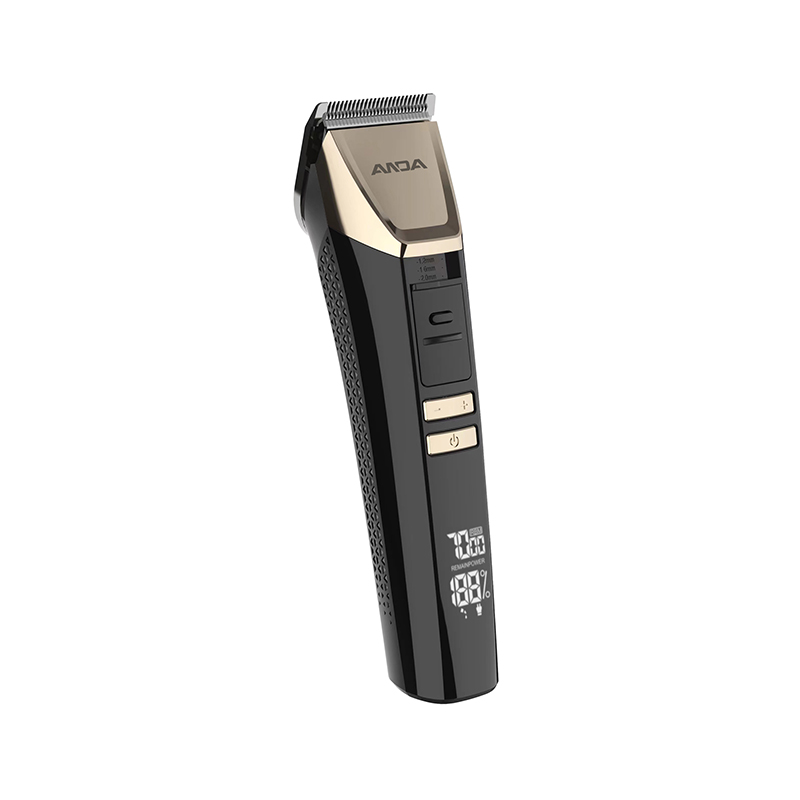 2025.08.22
2025.08.22
 Industry News
Industry News
What Causes Hair Jamming in Grooming Clippers?
One of the common issues faced by pet owners using a Pet Electric Clipper is the tendency for hair to get jammed during the grooming process. Hair jamming can disrupt a grooming session, cause uneven cuts, cause discomfort to the pet, and even damage the clipper’s motor over time. This problem often arises from a combination of factors, including blade design, clipper power, hair condition, and grooming technique. Understanding why a clipper clogs and how to reduce it can help improve grooming efficiency and prolong the life of the device. Even if the Pet Electric Clipper is well-rated, improper usage or mismatched components can quickly cause performance issues. While not all clippers clog easily, many do when misused or applied to unsuitable hair types without preparation.

Hair Type and Condition Matter More Than Expected
Different pets have different coat textures, densities, and lengths. Thick double coats, curly fur, or matted hair are much more likely to cause clogging during grooming. Clippers not designed to handle such fur will struggle to cut cleanly, resulting in strands getting caught between the blades. Dirty, oily, or damp fur further complicates the problem, as it tends to stick and accumulate more easily within the clipper head. Therefore, brushing the coat before trimming and ensuring the fur is clean and dry are essential steps to avoid excessive hair jamming.
Blade Sharpness and Spacing Affect Cutting Flow
The design and sharpness of the blades directly influence whether hair passes smoothly through the clipper or gets stuck. Dull blades require more force to cut, often pulling hair instead of slicing it cleanly. This not only causes discomfort but also increases the chance of hair building up and clogging the blades. Blade spacing is equally important—blades that are too close together may trap fine or curly hairs, while overly wide blades might miss finer details.
Motor Power and Torque Make a Significant Difference
A powerful motor provides the torque needed to cut through dense fur without hesitation. Low-powered clippers may work well on small, short-haired pets but will often jam when used on thicker coats. When the motor slows under load or stalls due to resistance, hair can pile up quickly in the blade area. Higher torque motors maintain consistent cutting speed even when resistance increases, helping the blades stay clear and operate smoothly. However, even high-powered clippers can jam if the blades are not properly maintained or if the pet’s coat is not prepped.
Proper Grooming Technique and Maintenance Reduce Clogging
How the clipper is used also plays a major role in preventing jams. Moving too quickly, using excessive pressure, or working against the direction of hair growth can force hair into the clipper head rather than guiding it cleanly through the blades. Taking steady, controlled strokes and stopping periodically to clean the blade area helps avoid build-up. Routine maintenance, such as brushing out cut hair, oiling the blades, and disinfecting the cutting head, ensures the clipper remains in good working condition. Some models also feature detachable blade systems that make cleaning much easier between sessions.
Prevention Begins With Preparation and Proper Tool Use
Hair jamming is a common but avoidable issue when grooming pets. The likelihood of clogging depends on many interconnected factors—coat type, blade sharpness, clipper power, and user technique. By selecting the appropriate clipper for the pet’s fur, preparing the coat properly, and maintaining the tool regularly, pet owners can significantly reduce the risk of interruptions. While no clipper is entirely jam-proof, understanding these variables allows for more comfortable, efficient grooming with fewer delays and better results.